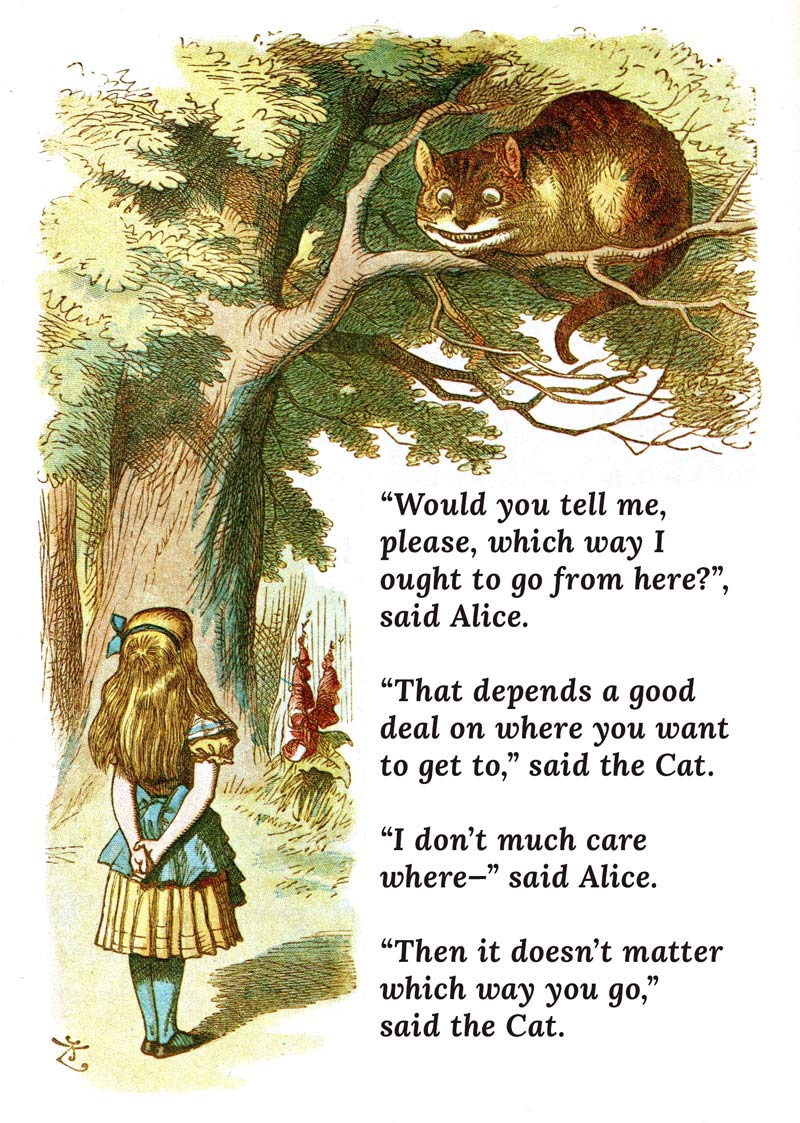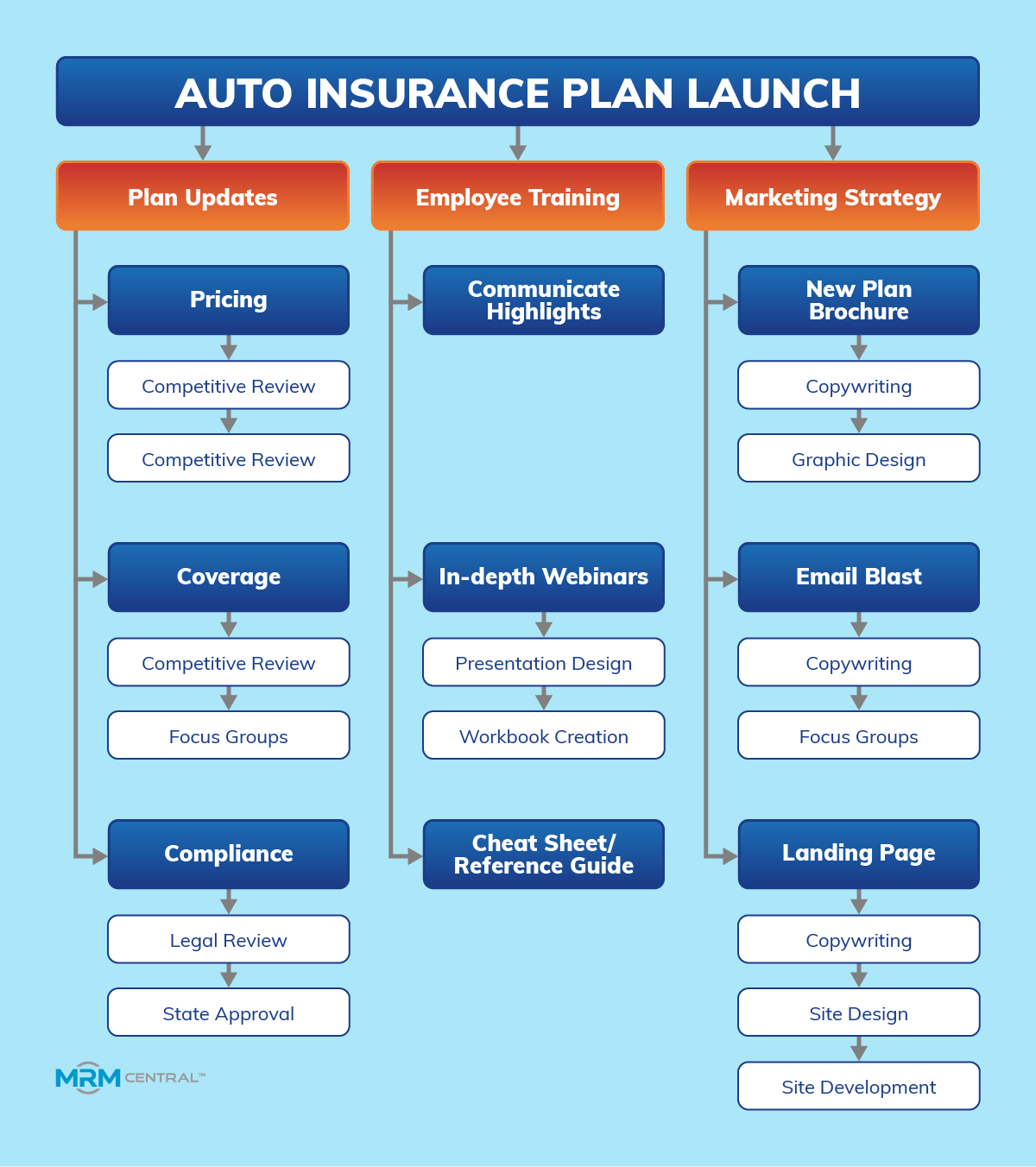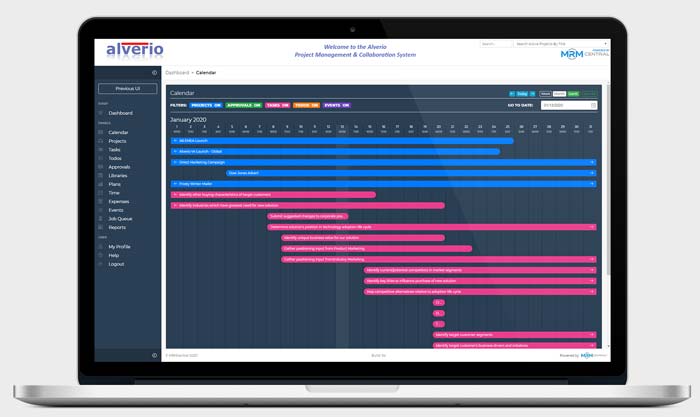13 Jan How to Build a Solid Project Timeline in 4 Steps
How to Build a Solid Project Timeline in 4 Steps
If you don’t know (or care) where you’re going, you’re much less likely to get somewhere you want to be. That was the advice the Cheshire Cat gave Alice in Alice in Wonderland, and it’s just as true in the business world.
Project management is all about getting a clear sense of what you want to accomplish and how you’ll get there. And the best way to keep your projects from wandering aimlessly through wonderland is to create a well-designed project timeline that identifies goals, steps, milestones, and resources (human or otherwise).
The following four steps will help you create a timeline that incorporates the big picture, anticipates hiccups, and gets all the stakeholders on the same page.
But before we begin…

From “Alice in Wonderland” by Lewis Carroll
What is a project timeline?
A project timeline is a birds-eye view of all the steps necessary to accomplish a goal and bring a project to completion. A comprehensive project timeline attaches dates to events (i.e., actions) listed in chronological order and identifies stakeholders responsible for completing each task.
Creating a comprehensive project timeline helps teams intelligently allocate resources to accomplish a major objective in an efficient, cost-effective manner without creating unnecessary stress for stakeholders and project owners.
Step 1: Identify Your Project Goal with a Scope Statement
Every project begins with a larger goal, which you can encapsulate in a scope statement. A scope statement identifies, in broad terms, the ultimate goal of the project.
Example: An auto insurance company wants to introduce a new plan to the state of California. Their scope statement, in this case, would cover:
Introducing a product to the market that is profitable
Creating a plan that is legally compliant and quickly gains approval from state agencies
Ensuring that all ABC Insurance employees understand the new plan (proper training)
Ensuring that the Marketing Department successfully communicates the new plan’s features and benefits to prospects and customers
The scope statement should also cover:
Criteria for success: Explain what constitutes success
Project deliverables: What does completion look like
Project exclusions: What do you NOT want to focus on. (Many projects suffer from “scope creep,” where the team ends up doing extra work that doesn’t move the project forward.)
Constraints: Identify what could hold you back
Assumptions: Clearly identify any elements of the plan that involve uncertainty (e.g., timely approval of the new plan from the CA Insurance Commissioner)
Step 2: Create a Work Breakdown Structure
A Work Breakdown Structure (WBS) identifies all the major components of a project—those larger outcomes that need to be achieved in order to complete the ultimate objective.
You can read our detailed blog post about how to build a WBS, but the idea is to identify goals, as opposed to individual tasks, that feed into the project’s mission. Take a look at the “Auto Insurance Launch Plan” to see what that might look like for our imaginary insurance company.
A general rule for a WBS is the 8/80 rule, which means that if a goal takes fewer than 8 hours or more than 80 hours to complete, it doesn’t belong in your WBS.
If the work required is on the short side, it can be folded into a larger goal. If it’ll take longer than 80 hours, it needs to be broken down further.

Example: Work Breakdown Structure (WBS)
Step 3: Identify the Tasks Involved for Completing Each Goal Listed in Your WBS
Now it’s time to break down each goal in your WBS, identifying:
The stakeholder (who is responsible for each tasks)
Time allotted per task
Dependencies (which tasks depend on other tasks to enable their completion)
Important: You may have your own theories about how long a task takes, but remember that everyone working on this project most likely has competing priorities. And that’s why it’s absolutely vital to get stakeholder input and buy-in before assigning times per task.
For example, even if it takes 15 hours to write the sales copy for the insurance plan brochure in our fictional company, the copywriter tasked with might have 5 other projects she’s working on simultaneously. Plus, it’s important to plan for possible edits from executives, re-writes informed by design choices, and a million other possibilities. The stakeholder (in this case, the copywriter) will have a good idea of what to expect.
Step 4: Create Your Timeline
Once you’ve got your tasks in place, it’s time to create your timeline and add milestones (e.g., dates when key tasks must be completed to keep you on track). That’s easy to do with the help of a powerful project management platform, and Marketing teams can use MRMcentral to create timelines, assign tasks, keep track of due dates, and create a thorough approval process.
Schedule a demo today to see MRMcentral in action!

Example: Timeline Crated with MRMcentral
Getting Everyone on Board
One of the most important reasons to create a project timeline is so everyone involved in the project, from stakeholders to executives, understands the big picture and the role they each play. A well-planned project timeline gets everyone on the same page, and it allows you to spot roadblocks and delays when they occur.
In short, a good project timeline is your secret weapon, increasing your odds of success when managing complex projects with plenty of moving parts.

